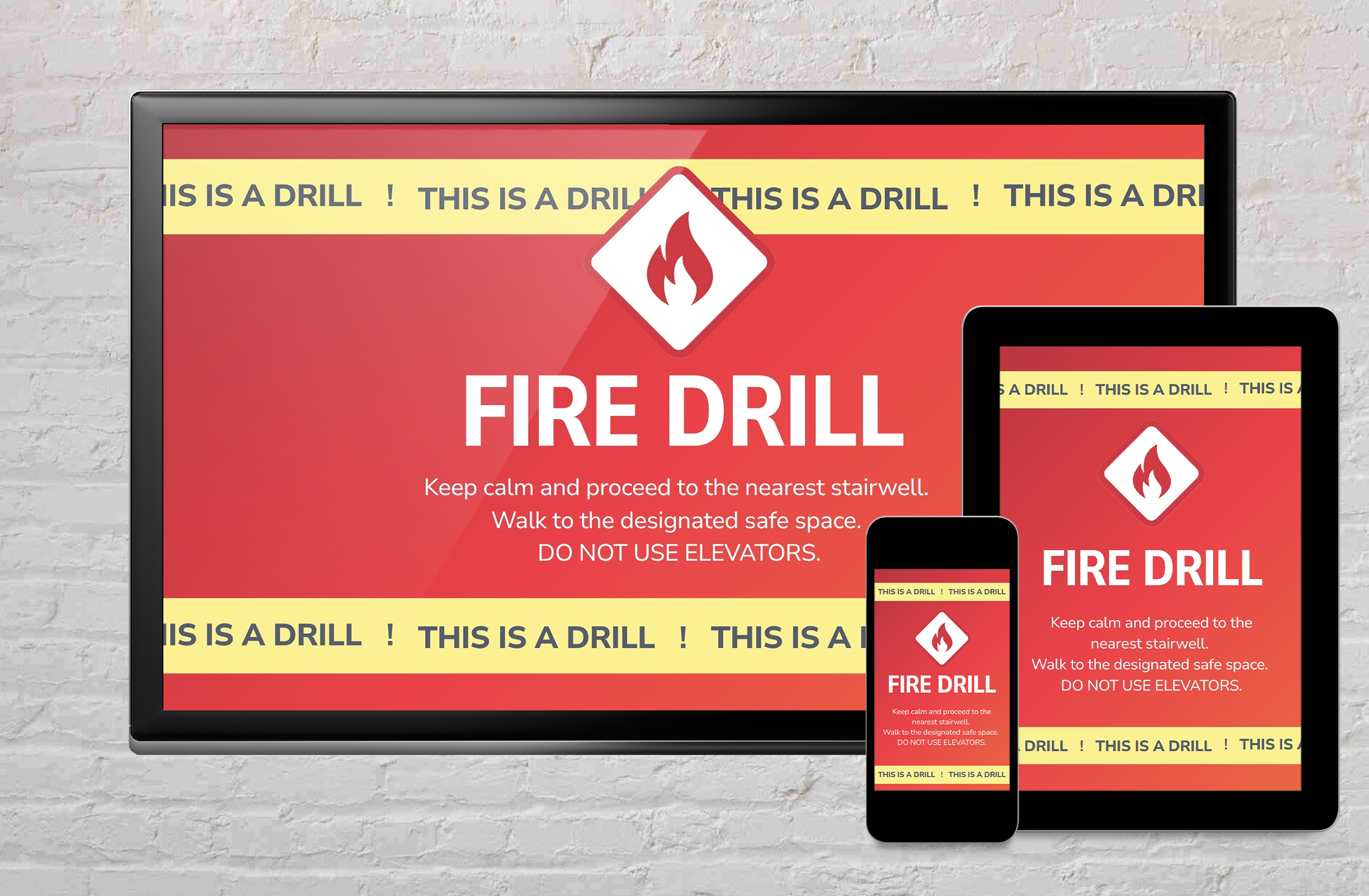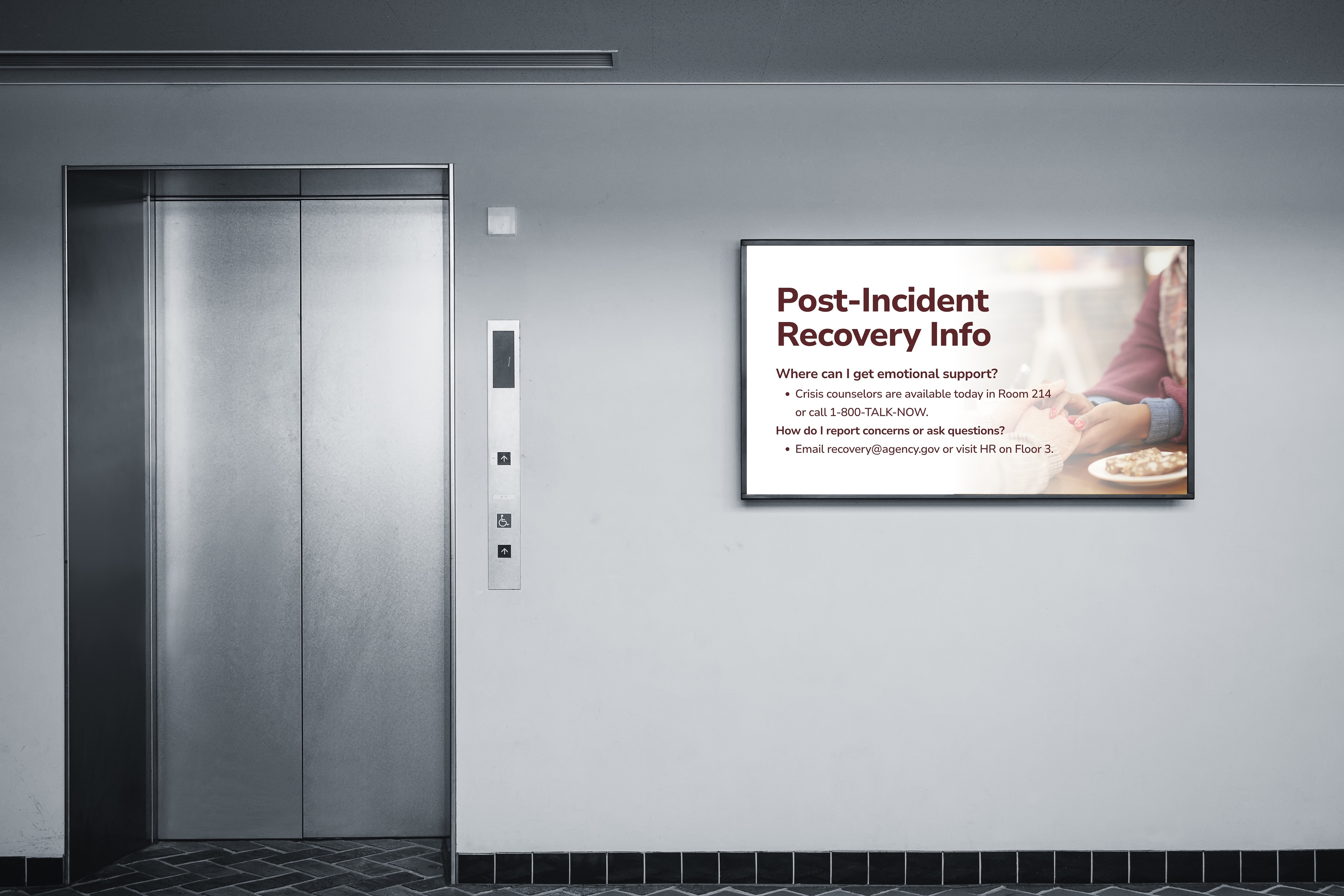Use digital signage across the four phases of emergency management (prevent, prepare, respond, recover) to keep government employees and citizens informed and safe.

Government facilities can’t afford confusion during a crisis. With digital signage, you can turn your existing screens into a fast, reliable public safety tool—no extra hardware needed.
Skip the deep dive >> start the conversation today.
Whether facing natural disasters, civil unrest, cyber attacks or public health crises, city and county agencies must act swiftly and clearly. The four phases of emergency management (prevent, prepare, respond, recover) provide the blueprint. Let’s breakdown how municipalities can safeguard both staff and citizens at every stage.

PHASE 1: PREVENT — BUILD A SAFER, MORE-INFORMED COMMUNITY Prevention starts from within. It means ensuring government facilities are equipped with tools that promote situational awareness, workplace safety and employee readiness before emergencies even begin.
Internally, this can mean using digital signage to:
Externally, prevention also supports community resilience. Use signage in public buildings like libraries, community centers and city hall, to share updates on weather alerts, vaccination availability and preparedness campaigns.

PHASE 2: PREPARE— PRACTICE NOW, SO YOU'RE READY LATER
Preparation hinges on clear communication and practiced protocols which include drills, tabletop exercises and clear communication protocols, ideally delivered via multimodal systems that don’t rely on a single method (visual, audio and text).Together, these modalities create a redundant, multi-sensory safety net that reinforces muscle memory, mitigates environmental barriers, boosts compliance and adapts to evolving threats.
Use digital signage to amplify preparedness across agencies:

PHASE 3: RESPOND— REACH THE RIGHT PEOPLE INSTANTLY
The ability to deliver targeted, real-time messaging to both government workers and the public can mean the difference between chaos and coordinated action.CAP, or Common Alert Protocol, is an XML-based system widely used by government, education, transportation, and corporate industries. With CAP integration, alerts can instantly override daily digital signage to broadcast emergency instructions in precise locations.
Respond with unified, targeted alerts:

PHASE 4: RECOVER— REBUILD TRUST THROUGH COMMUNICATION
The recovery phase is a vital connection between crisis response and renewed stability. Clear communication is essential to rebuild trust and establish routines. Digital signage plays a key role in helping local government employees and citizens effectively coordinate actions after a crisis, reuniting families and restoring normalcy while delivering real-time updates that enhance clarity and accountability. Digital signage offers an agile way to coordinate post-crisis efforts.
Recover with coordinated communication:
WRAPPING IT UP: PREPAREDNESS IS A PUBLIC SERVICE
Emergencies demand proactive, phased strategies, not reactive chaos. By aligning with the four phases of emergency management (prevent, prepare, respond, recover), local governments can transform vulnerability into resilience. Digital signage, integrated with CAP, empowers this transition:
NEXT STEPS:
Want to future-proof your city's emergency response strategy? Schedule a call with our digital signage specialist to tailor a solution for your agency’s unique needs and protect your community from the inside out. Ask about our free government booklet, geared toward helping you simplify safety, communication and community engagement through digital signage.
Company bio: Carousel is a leading digital signage platform that’s been keeping communities informed and safe for over 25 years. Designed for screens of all sizes, Carousel makes it easy for local governments to share critical information — quickly, clearly and reliably. You can reach the Carousel team at 612-261-1000 or visit Emergency Messaging with Carousel.
Subscribe, learn and achieve ultimate success with your signage system: